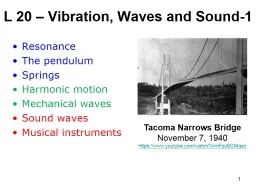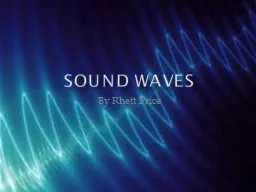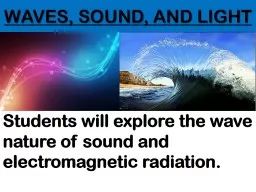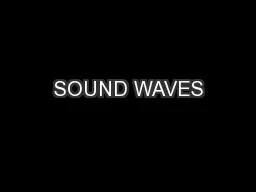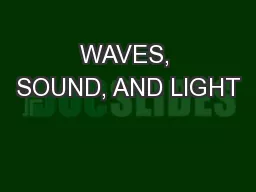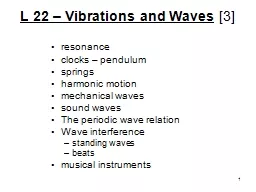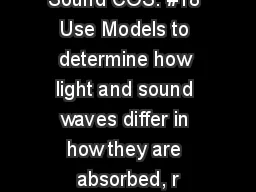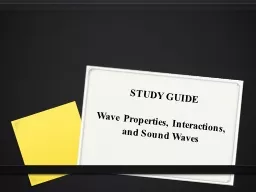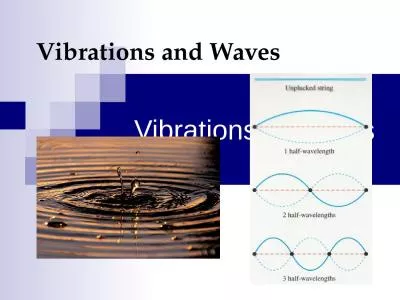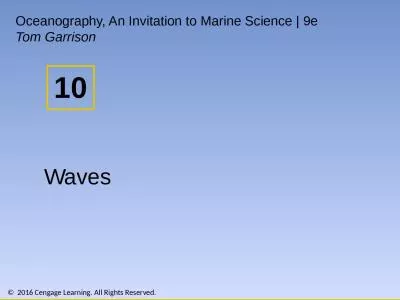PPT-L 20 – Vibration, Waves and Sound-1
Author : stefany-barnette | Published Date : 2017-05-19
Resonance The pendulum Springs Harmonic motion Mechanical waves Sound waves Musical instruments Tacoma Narrows Bridge November 7 1940 httpswwwyoutubecomwatchvnFzu6CNtqec
Presentation Embed Code
Download Presentation
Download Presentation The PPT/PDF document "L 20 – Vibration, Waves and Sound-1" is the property of its rightful owner. Permission is granted to download and print the materials on this website for personal, non-commercial use only, and to display it on your personal computer provided you do not modify the materials and that you retain all copyright notices contained in the materials. By downloading content from our website, you accept the terms of this agreement.
L 20 – Vibration, Waves and Sound-1: Transcript
Download Rules Of Document
"L 20 – Vibration, Waves and Sound-1"The content belongs to its owner. You may download and print it for personal use, without modification, and keep all copyright notices. By downloading, you agree to these terms.
Related Documents

